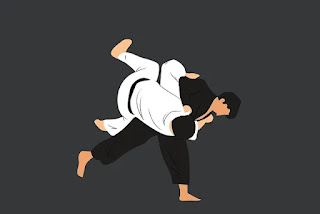Karate is a popular martial art that has gained global recognition as a sport. Karate championships are organized at regional, national, and international levels, providing opportunities for karate practitioners to compete against each other and showcase their skills. To ensure fair and safe competition, karate championships have established rules and regulations that govern the conduct of the sport.
In this article, we will discuss the key rules and regulations of karate championships.
Karate Styles
Karate is a diverse martial art that has several styles, including Shotokan, Goju-Ryu, Wado-Ryu, and Shito-Ryu. Each style has its own techniques, stances, and training methods. Karate championships may recognize one or more of these styles, depending on the organizers' preferences and the competition's rules.
Age and Weight Categories
Karate championships are typically divided into age and weight categories to ensure fair competition. Age categories can range from children under 10 to adults over 35, with subcategories within each group. Weight categories may vary depending on the organizers' preferences, but generally range from lightweight to heavyweight.
Equipment
Karate practitioners must wear appropriate equipment during competitions to ensure their safety and the safety of their opponents. The equipment includes:
- Karate uniform: Practitioners must wear a traditional karate uniform, known as a gi. The gi consists of a jacket and pants made of cotton or canvas.
- Protective gear: Participants must wear protective gear, including gloves, shin guards, and mouthguards. Male competitors must also wear groin protectors.
- Belts: Participants must wear belts of different colours to indicate their level of proficiency.
Scoring System
The scoring system in karate championships varies depending on the competition's rules. However, most competitions use a point system to determine the winner of a match. Points are awarded for techniques that land successfully on an opponent. The number of points awarded for each technique may vary depending on the competition's rules.
In karate, there are three types of techniques: punches, kicks, and strikes. Each technique has its own scoring value, with kicks typically being awarded the most points. If a participant lands a technique that is not allowed in the competition's rules, they may receive a penalty.
Match Duration
The duration of karate matches also varies depending on the competition's rules. Most karate championships have matches that last between two and three minutes. If there is no clear winner at the end of the match, additional rounds may be added, or the winner may be determined by the highest number of points scored during the match.
Disqualification
Karate championships have established rules and regulations to ensure fair play and the safety of all participants. If a participant violates these rules, they may be disqualified from the competition. Some common reasons for disqualification include:
- Using prohibited techniques: Participants are only allowed to use techniques that are allowed by the competition's rules. If they use a prohibited technique, they may be disqualified.
- Unsportsmanlike behaviour: Participants must conduct themselves in a respectful and sportsmanlike manner. If they engage in unsportsmanlike behaviour, such as taunting or insulting their opponent, they may be disqualified.
- Failing to follow instructions: Participants must follow the referee's instructions and adhere to the competition's rules. If they fail to do so, they may be disqualified.
Conclusion
Karate championships are a great opportunity for karate practitioners to showcase their skills and compete against other practitioners from around the world. To ensure fair and safe competition, karate championships have established rules and regulations that govern the conduct of the sport. These rules cover everything from the equipment that participants must wear to the techniques that are allowed in the competition. By following these rules, participants can ensure that they have a fair and enjoyable competition experience.
